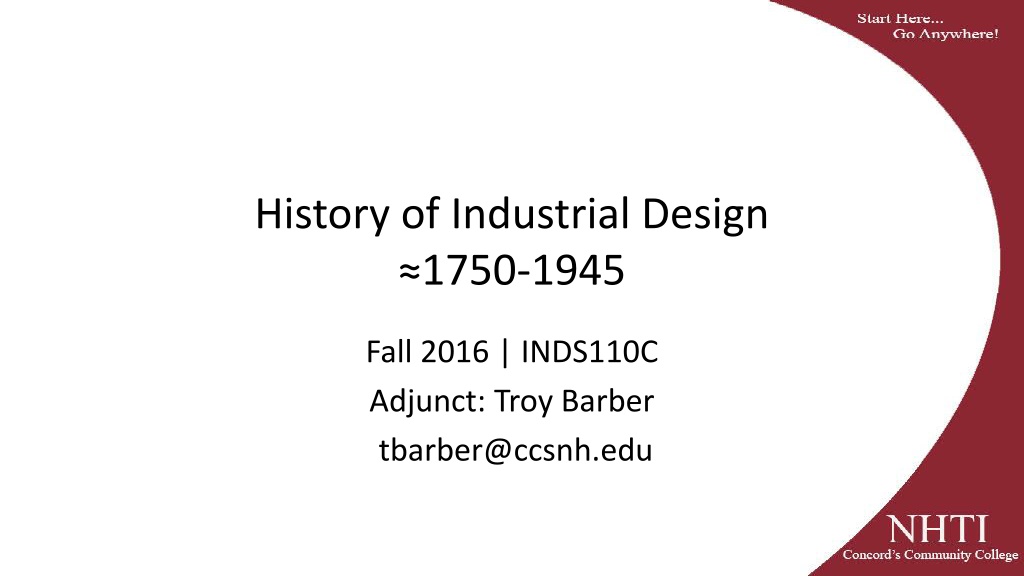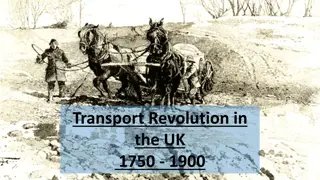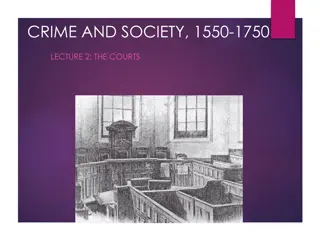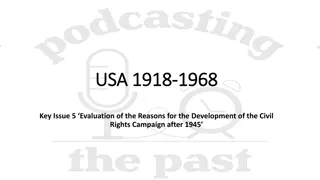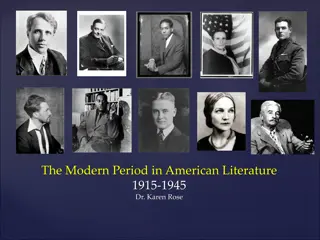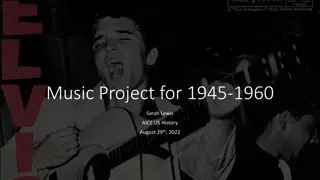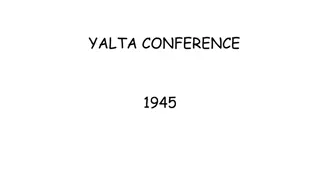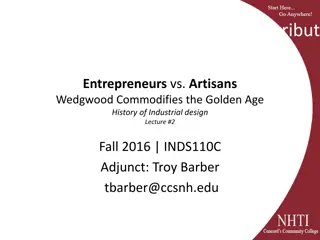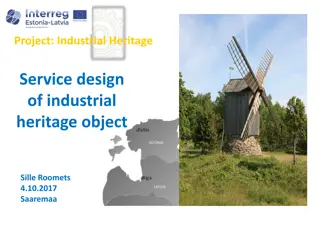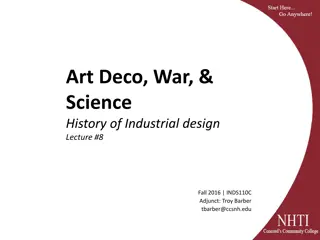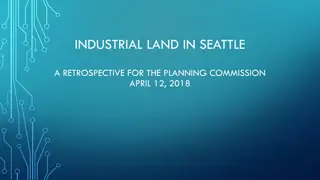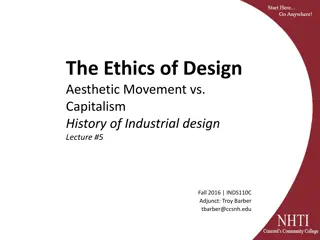Exploring the Evolution of Industrial Design: 1750-1945
Delve into the intriguing history of Industrial Design from 1750 to 1945, examining the collaboration between art and industry, mass production, changing consumption patterns, material advancements, and societal impacts. Discover the origins of Industrial Design, major design styles, and influential designers while cultivating a foundation for contemporary practices. Engage with captivating images, articles, and discussions to fuel your creative imagination and innovation as a designer.
Download Presentation

Please find below an Image/Link to download the presentation.
The content on the website is provided AS IS for your information and personal use only. It may not be sold, licensed, or shared on other websites without obtaining consent from the author. Download presentation by click this link. If you encounter any issues during the download, it is possible that the publisher has removed the file from their server.
E N D
Presentation Transcript
History of Industrial Design 1750-1945 Fall 2016 | INDS110C Adjunct: Troy Barber tbarber@ccsnh.edu
Catalog Description: Interactively and enthusiastically explore topics in the history of Industrial Design primarily from 1750 to 1945. Collaboration between art and industry, mass production, changing patterns of consumption, advances in material processes, and the social and/or technological impact of Industrial Design on transportation, healthcare, consumer goods, domestic space, and the workplace. We will also look at historical antecedents to Industrial Design prior to 1750 We will explore the tension between commerce and art that has seemingly always existed in the field of Industrial Design.
What We Really Want To Do: Learn about where we, as Industrial Designers, came from. Look at and discuss A LOT of cool pictures. Read some interesting articles and period pieces to give us an idea of the environments the practice of Industrial Design evolved in. Have fun. Do no harm. Find an aspect of Industrial Design that speaks to you and will continue to fire your imagination for creativity and innovation for the duration of your careers.
Major Course Objectives/Learning Outcomes: Chronological survey of the history of Industrial Design from the mid-Eighteenth to the mid- Twentieth centuries, with some topics from outside this narrow window thrown in for good measure. Lecture format We will discuss major design styles and movements, significant designers, manufacturers, design-related companies, and innovations in technology and material use. Students: explore different definitions of Industrial Design and identify historical antecedents that may have arisen before 1750, as well as more modern, contemporary, and future definitions of the profession. Let s construct a historical and contextual foundation upon which all contemporary industrial design is based. Those who cannot remember the bad industrial designs of the past are condemned to repeat them. Not George Santayana
Separated At Birth (and by History)? Braun T3 Pocket Radio (1958) vs. the iPod (2001) Braun T1000 Radio (1962) vs. the Mac Pro. 2 (2006)
Assignments & Projects Writing Assignment, Due September 7: What Is Your History? Weekly Quizzes regarding previous week s lecture and discussions Midterm Project Presentation, Due October 12: What subject in the history of industrial design whether it s a particular era, event, figure, type of product, or something else excites you the most? You are welcome to diver deeper into a subject we ve covered already, or select something else entirely. Please prepare and present a 15-20-minute oral presentation to the class using PowerPoint and any other tools at your disposal. The final deliverable will be the presentation submitted in digital format (PowerPoint, .PDF, etc.). Final Project Presentation, Due December 7: What industrial designer do you most look up to? Why? Please prepare and present a 15-20-minute oral presentation to the class using PowerPoint and any other tools at your disposal. We want your presentation to excite us and inspire us to do our own further research on your subject. The final deliverable will be the presentation submitted in digital format (PowerPoint, .PDF, etc.). Final Exam, December 14: Details TBD.
Question: What Do You Want To Accomplish In This Class? Frank Lloyd Wright Office Armchair (1904-06) Charlotte Perriand, Le Corbusier (Charles- douard Jeanneret), Pierre Jeanneret Revolving Armchair (1928) Jean Prouv "Direction" Office Armchair no. 352 (1951) Alberto Meda Light Light Chair (1987)
Misc. & Optional Resources http://www.idsa.org/bookshelf/design-history American Design, Russell Flinchum (alibris.com) Industrial Design A-Z, Charlotte & Peter Fiell (http://www.abebooks.com/) Twentieth-Century Design, Jonathan M. Woodham History of Modern Design, David Raizman 300 Years of Industrial Design, Heath, Heath, & Jensen Objects of Design, Adrian Forty https://www.youtube.com/user/HistoryofID/videos
Grant Information Get IT is sponsored by a $2.5 million grant from the U.S. Department of Labor, Employment & Training Administration TAACCCT Grant #TC-26498-14-60-A-33 NHTI, Concord s Community College, is an equal opportunity employer, and adaptive equipment is available upon request to persons with disabilities. This workforce solution was funded by a grant awarded by the U.S. Department of Labor s Employment and Training Administration. The solution was created by the grantee and does not necessarily reflect the official position of the U.S. Department of Labor. The Department of Labor makes no guarantees, warranties, or assurances of any kind, express or implied, with respect to such information, including any information on linked sites, and including, but not limited to accuracy of the information or its completeness, timeliness, usefulness, adequacy, continued availability or ownership.
NHTI information and Attribution NHTI, Concord s Community College 31 College Drive Concord, NH 03301 www.nhti.edu Creative Commons Attribution 4.0 International License INDS 110C History of Design curriculum by Troy Barber is licensed under the Creative Commons Attribution 4.0 International License. To view a copy of this license visit http://creativecommons.org/licenses/by/4.0/deed.en_US. http://creativecommons.org/licenses/by/4.0/deed.en_US
